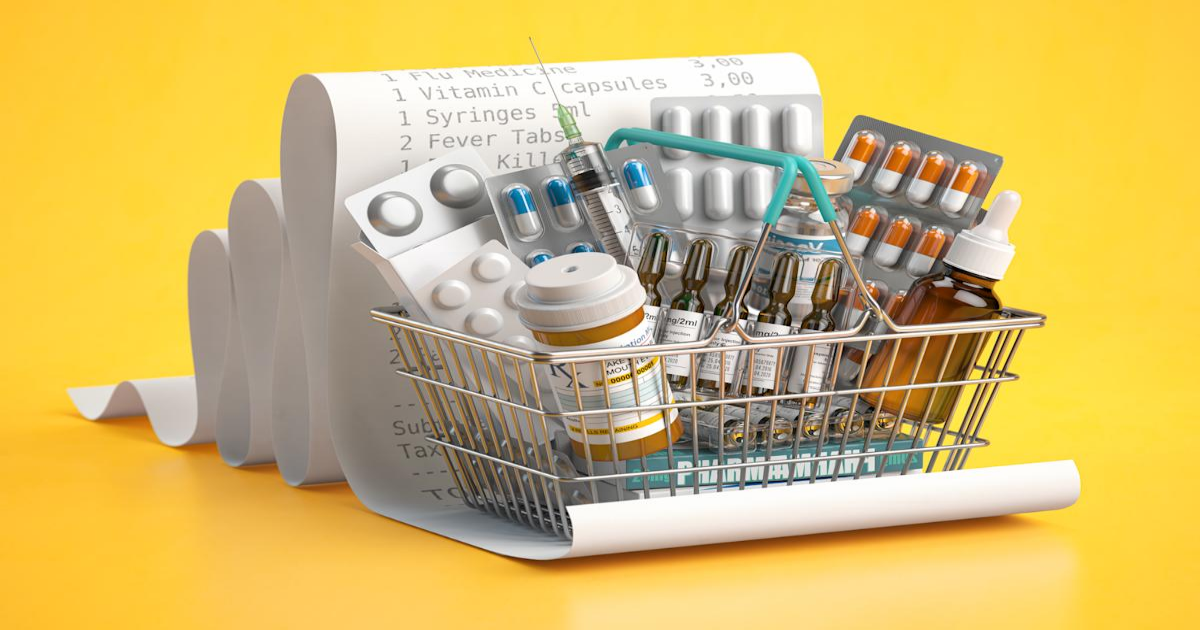Pharmaceutical giant Pfizer (NYSE: PFE) was a big winner during the COVID-19 pandemic. Its vaccine and antiviral pill generated billions of dollars in sales. However, that revenue source has largely dried up, and investors have shunned the stock since.
Pfizer stock has drifted lower since peaking in 2022 and sits over 63% off its former high following the market’s recent sell-off.
I’ll admit, Pfizer is dealing with a lousy narrative. Aside from the declines since the height of the pandemic, President Donald Trump’s Secretary of Health and Human Services, Robert F. Kennedy Jr., has a public disdain for the pharmaceutical industry, and now investors are on edge in a highly volatile market.
Yet Pfizer’s upside could be rising as the price falls. Here is why it could be a smart buy now.
Not every stock needs to be a millionaire-maker. Sometimes, slow and steady can win the race. Pfizer has been around in some form since the 1840s. It’s one of the largest and oldest companies in the world, let alone the pharmaceutical industry. Investors typically buy value stocks for solid upside without taking too much risk.
Pfizer delivers here. The dividend yield has ballooned to 7.5% at its current share price. In other words, investors are getting a 7.5% annual return on their investment as long as Pfizer continues to pay the dividend. If management raises the dividend, that’s even better! For reference, the S&P 500 has returned an average of 10% annually over the past 50 years. Pfizer doesn’t need to do much beyond its dividend to keep pace with the broader market.
The stock’s decline has also dragged Pfizer’s valuation to the ground. Its current price-to-earnings ratio is less than 8 times 2025 earnings estimates. I want to be careful here and remind investors that a cheap stock can keep going down. But I think it’s worth pointing out that such low valuations often apply to distressed companies, and as you’ll soon see, Pfizer is on solid ground.
I should point out that Pfizer’s dividend yield is well above its historical norms. That often signals trouble. A high-yield stock with lousy business fundamentals is frequently called a yield trap, and investors usually regret buying such stocks.
Pfizer’s abnormally high yield seems more a symptom of all this negative sentiment than a red flag about the dividend’s sustainability. Management just raised the quarterly dividend in December, and the annual payout ($1.72 per share) is only 61% of the bottom end of management’s 2025 earnings guidance.
The company makes plenty of money to afford its dividend, and it seems unlikely the business would unexpectedly implode. For example, Pfizer’s top seller in 2024 was Eliquis, a blood-thinning drug. That’s not something people generally stop taking once they are on it. Analyst estimates anticipate minimal growth in 2025 and 2026, but Pfizer doesn’t need much to maintain and grow its dividend due to the low payout ratio.
It’s not all rosy for Pfizer. Pharmaceutical companies depend on patents to protect their drugs from generic copycats. Eventually, those patents expire, so it’s crucial to have new drugs in the pipeline to replace products as they come off patent.
Pfizer’s business will probably look a bit different in five years. The core patents for several of Pfizer’s top sellers, including Eliquis, Prevnar, Ibrance, and Xtandi, expire in the U.S. over the next few years. Their sales will drop as low-priced generics flood the market. Fortunately, Pfizer has been preparing for this.
The company used a chunk of its pandemic-related profits to acquire Seagen for $43 billion — the acquisition positions Pfizer to grow its oncology business over the coming years. Additionally, Pfizer is developing danuglipron, an oral GLP-1 agonist drug to treat diabetes. The global GLP-1 agonist market could exceed $150 billion by 2030, so this could be a fantastic opportunity if the drug performs well.
Pfizer’s pipeline looks promising, but it might be hard to forecast long-term earnings growth until investors see how incoming drugs offset declines due to patent expirations. That’s the risk in buying shares here. Analysts have wide-ranging expectations, with long-term earnings growth rates varying between 2.5% and over 13.8%.
Even if earnings grew just 2.5% annually, the stock could still deliver 10% annualized total returns because of the dividend. It could be far better if Pfizer grows faster since that minuscule valuation would likely rise, too.
That’s the beauty of low expectations. It’s no sure thing, but I see far more upside than downside from here. That makes Pfizer a compelling buy despite its stomach-churning 63% decline.
Before you buy stock in Pfizer, consider this:
The Motley Fool Stock Advisor analyst team just identified what they believe are the 10 best stocks for investors to buy now… and Pfizer wasn’t one of them. The 10 stocks that made the cut could produce monster returns in the coming years.
Consider when Netflix made this list on December 17, 2004… if you invested $1,000 at the time of our recommendation, you’d have $461,558!* Or when Nvidia made this list on April 15, 2005… if you invested $1,000 at the time of our recommendation, you’d have $578,035!*
Now, it’s worth noting Stock Advisor’s total average return is 730% — a market-crushing outperformance compared to 147% for the S&P 500. Don’t miss out on the latest top 10 list, available when you join Stock Advisor.
*Stock Advisor returns as of April 5, 2025
Justin Pope has no position in any of the stocks mentioned. The Motley Fool has positions in and recommends Pfizer. The Motley Fool has a disclosure policy.
Down 62%, Should You Buy the Dip on Pfizer? was originally published by The Motley Fool
